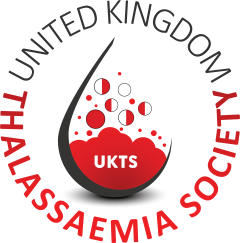Blood transfusion therapy
Information
Transfusions of red blood cells are the main life-saving component of managing moderate to severe forms of thalassaemia.
Red blood cell transfusion in children is essential to enable normal growth and development. In adults, regular red cell transfusions remain necessary to maintain life and if given appropriately, will minimise the symptoms of anaemia and allow an increase in quality of life.
People with transfusion dependent thalassaemia like beta thalassaemia major may require a red cell transfusion every 2-6 weeks depending on their haemoglobin level.
If you have hemoglobin H disease or some forms of beta thalassemia intermedia, you may only need occasional blood transfusions. For instance, you may have transfusions when you have an infection or other illness, or when your haemoglobin is very low, and you become symptomatic.
A haemoglobin level maintained above 95-105g/l is sufficient to minimise bone marrow expansion (bone marrow is the spongy tissue in the bones that produces red blood cells) and minimise transfusion iron loading in most people living with transfusion dependent thalassaemia (Cazzola et al,1995; Pasricha 2014).
In some cases, people with heart disease, extramedullary haematopoiesis (where blood cells accumulate outside of the bone marrow) or inadequate bone marrow suppression may benefit from higher pre transfusion thresholds of 110-120 g/l- although there is little evidence published on this. We advise that if you have been prescribed on a transfusion therapy your individual pre-transfusion haemoglobin should be discussed with your haematology team to ensure your treatment plan is safe and right for you.
Transfusing to a post haemoglobin of over 150 g/l can be dangerous and not recommended as it increases the risk of stroke, hyper viscosity symptoms (where the blood thickens and does not flow at the rate it should) and iron burden.
Blood transfusions allow you to feel better and live well throughout your life.
How are red blood cells given?
During a transfusion, a needle is used to insert an intravenous (IV) line into one of your blood vessels. Through this line, you receive healthy blood. The procedure usually takes 1 to 6 hours depending on how many units of red cells you receive. You will be monitored throughout the transfusion to ensure you are safe and well.
What are the side effects of red cell transfusion?
The haemoglobin in red blood cells is an iron-rich protein. Thus, regular blood transfusions can lead to a build-up of iron in the blood. This condition is called iron overload.
The harmful iron deposits around the body in vital organs such as the heart, pancreas and hormone-producing glands resulting in serious problems, such as diabetes, failure to grow and go through puberty, infertility, an underactive thyroid gland and liver disease. Heart disease is the most dangerous of these complications. People with thalassaemia who do not have access to chelation treatment, for example, in developing countries this is the most common cause of death. All of these problems are avoidable with regular monitoring (blood tests and MRIs ) and an effective iron chelation therapy.
In the United Kingdom we are extremely fortunate to have a voluntary blood service that is safe and effective. Blood transfusions are usually very safe, because donated blood is carefully tested, handled, and stored by NHS Blood and Transplant
However, on rare occasions there is a small chance that your body may have a mild to severe reaction to the donor blood. Other complications may include fever, heart or lung complications, alloimmunization etc.
The blood in the UK is tested and matched with yours to try to reduce these complications.
There is also a very small chance of getting an infectious disease such as hepatitis B or C or HIV through a blood transfusion. For HIV, that risk is less than one in 1 million. However, scientific research and careful medical controls make the supply of donated blood very safe.

Thalassaemia Leaflets
- Carriers of Alpha Thalassaemia Leaflet
- About Alpha Thalassaemia – Published by TIF
- Read about Alpha 0
- Alpha 0 Faq’s
- About Sickle Cell Disorders – Published by TIF


